Spring is when some of the best produce is made; including peas, root veg, asparagus, rhubarb, and oddly enough, strawberries. Doesn’t that last one just stick out like a sore thumb?
I love Strawberries, these little guys are not only sweet, but confusing as hell. For example, they aren’t berries, they aren’t even fruits! They are in the same family of plants as roses, and the fleshy part of the ‘berry’ is what botanist call a fleshy receptacle, which is a fancy word for a swollen part of the vine that holds seeds. Which I think technically makes them a vegetable, however I couldn’t find anything that confirms they are. That being said, the ‘seeds’ on the outside, are actually little fruits! Which make the whole strawberry an aggregate accessory fruit. When you think about it, accessories can make the outfit, and accessories to murder still go to jail, so what’s the difference!
All that aside, let’s start making some jam.
I’m using rhubarb from my local farmers market, and frozen strawberries… which might sound odd, but here is the fact of the matter: the weather has given my area little to no strawberries. The weather in Peru must be beautiful this time of year because the package of frozen strawberries I bought were from there, and they were perfect.
Fruit and vegetables get all their taste and nutrients from the vine/ground they grow in/on. When you buy fruit and vegetables from the grocery store, the product is picked early, so it will ripen as it travels; giving it a longer shelf life. This means the quality of the product suffers. Buying local is a great way to get a better product because it has a shorter travel distance, and therefore get more time in the soil. Because of the afformentioned weather here, the strawberries are subpar and non existent in the farmers’ market. So, I’m going for the frozen strawberries. Firstly, they are picked right when they are ripe, and then flash frozen. Secondly, they are brought in from where the weather has been kinder to them. So it’s the best choice for me now.
This Jam came out beautifully, the classic mixture of strawberries and rhubarb is popular for a reason, and the added hint of caramel was a nice addition. That being said, the recipe given below is what I did, but if I were to do it again, I would definitely cut the Pectin in half, and replace more of the regular sugar with the Browned sugar.
Browned Sugar:
- 283g (10oz) of granulated sugar.
- This is essentially caramel that acts more like sugar. It has that sweet aromatic flavour of caramel, but remains crystallized like sugar.
Jam:
- 600g Frozen sliced strawberries (yes frozen, read above for why)
- 200g of Rhubarb
- 254g Browned Sugar
- 293g Sugar
- 57g Pectin
- 1.5 T Vinegar
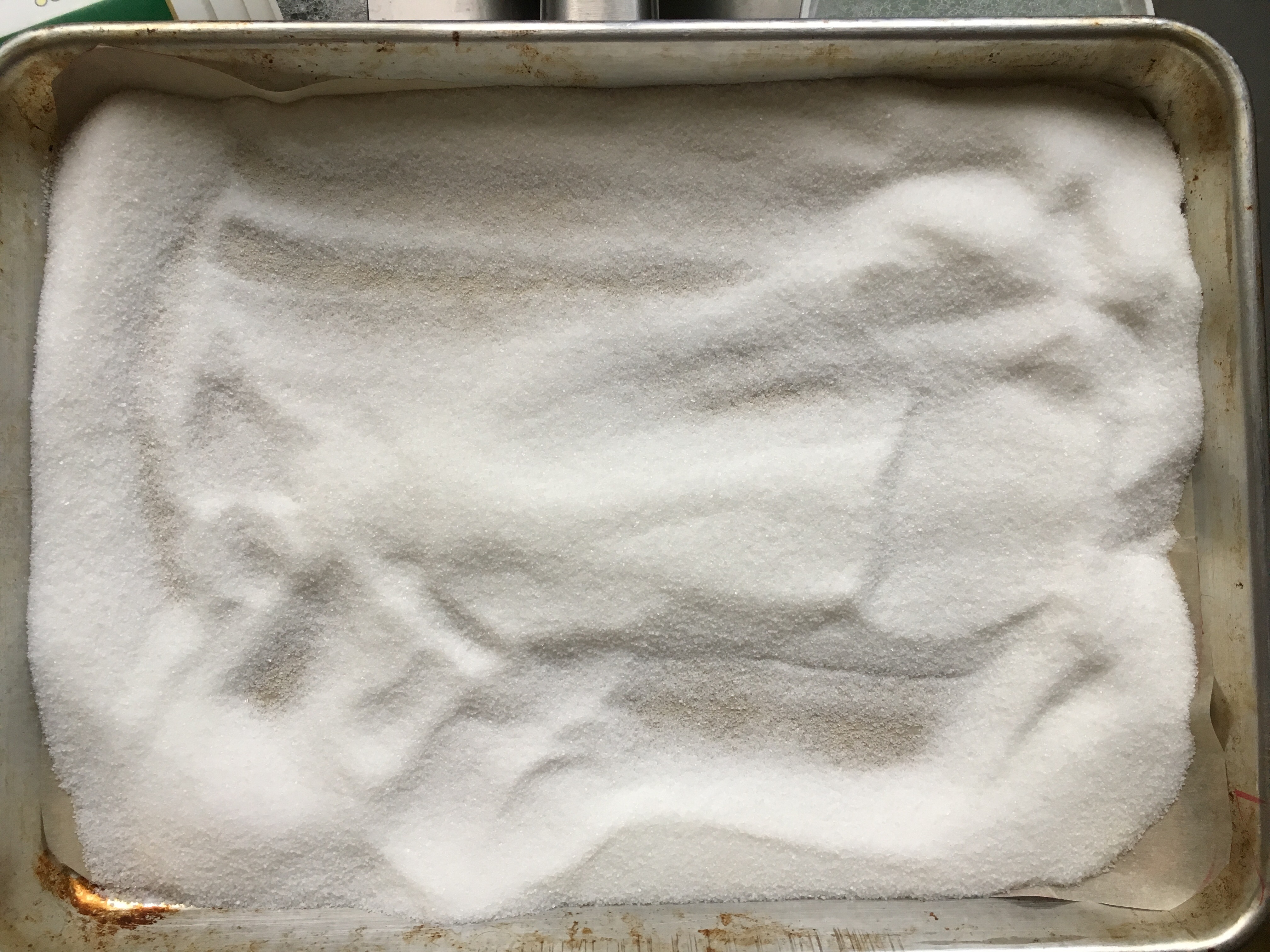 Place a piece of parchment paper on a sheet pan, and layer 283g of sugar evenly over the sheet pan.
Place a piece of parchment paper on a sheet pan, and layer 283g of sugar evenly over the sheet pan.- Place pan into a 270 degree convection oven (300 degree, if not convection).
After half an hour, use a spatula to move sugar around, and break up any clumps forming. Rotate pan 180 degrees.
- Keep repeating step 3 until sugar is golden brown and delicious
Let sugar cool, if lots of clumps form, use a food processor to restore to granules
Now that we have the Browned Sugar, let’s start our jam!
Wash the rhubarb, trim off the leaves and branches, then cut it into 1″ bias slices.
Place the Strawberries and the Rhubarb into a pan on low heat. Mix it occasionally until there is enough liquid to mostly cover the rhubarb and Strawberries, then place the lid on the pan.
- Keep lid on pan until the rhubarb becomes becomes really soft.
- Remove the lid, and turn up heat to high until the mixtures comes to a rapid boil.
Add Sugar, Browned Sugar, pectin, and Vinegar and mix until incorporated.
- Leave mixture on high for 5-10 minutes mixing continuously, then lower heat to medium and make sure mixture stays at a medium boil.
- Keep mixing so that it doesn’t burn on the bottom of the pan, and wait until the mixture get viscous. If the boil starts to become roaring, lower the temperature.
- Take a spoon and use it to put a drop of the mixture into ice water. If the drop disintegrates in the water, leave the mixture to boil longer, if it holds a ball like shape, it’s ready to remove from the heat.
- Let mixture cool, then transfer to storage container and put in the fridge
- Take a fancy photo, and post it to Instagram with the hashtag #foryourfoulmouth
http://harvestontario.com/whatinseason
https://youtu.be/LybfPwCzs3g
https://www.theguardian.com/science/blog/20 13/oct/03/science-magic-jam-making didn’t use any information directly from here, but it helped me make my recipe

 Cut little crosses on the bottom of each Tomato. Do your best to cut the skin, and not into the flesh of your tomato. A Pearing knife, or small serrated knife will work well.
Cut little crosses on the bottom of each Tomato. Do your best to cut the skin, and not into the flesh of your tomato. A Pearing knife, or small serrated knife will work well. Into the same bowl as the Lemon and the Basil, whisk together the Olive Oil, Salt, pepper, and diced Onions.
Into the same bowl as the Lemon and the Basil, whisk together the Olive Oil, Salt, pepper, and diced Onions.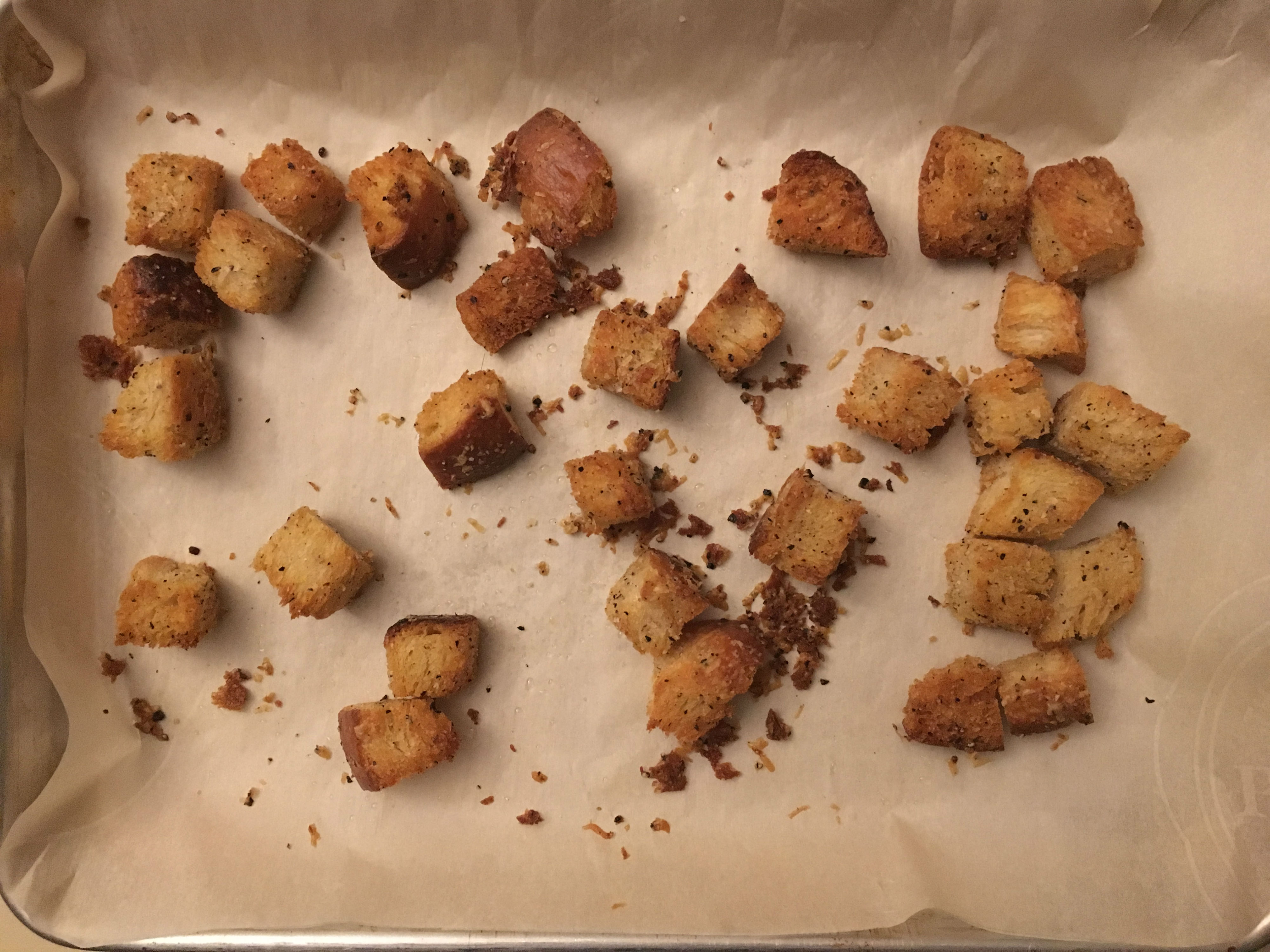 Remove from baking sheet, and let cool on the side until needed.
Remove from baking sheet, and let cool on the side until needed.
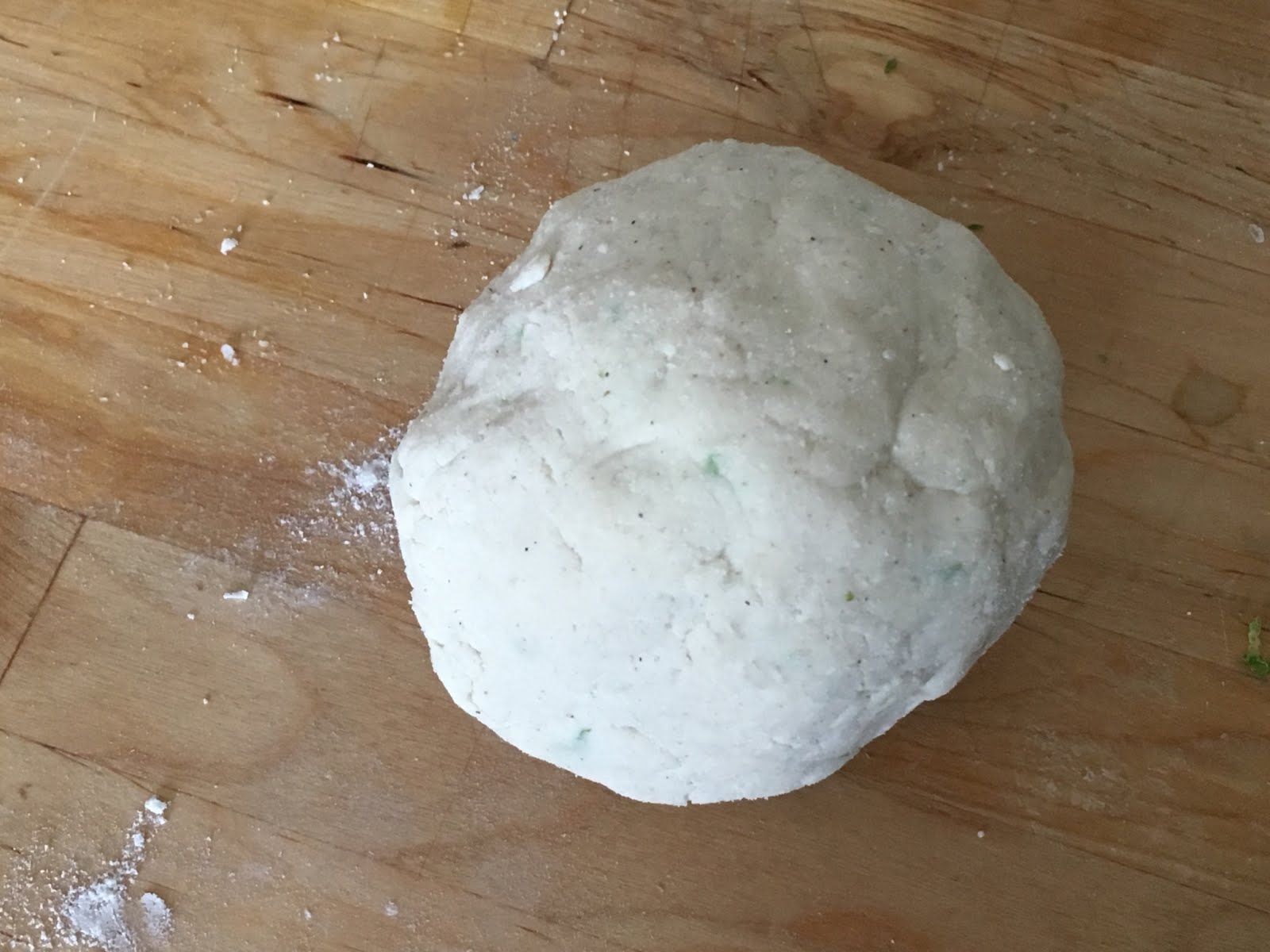 Divide the ball into 4, and roll each section into its own ball. Cover all of them with plastic wrap.
Divide the ball into 4, and roll each section into its own ball. Cover all of them with plastic wrap.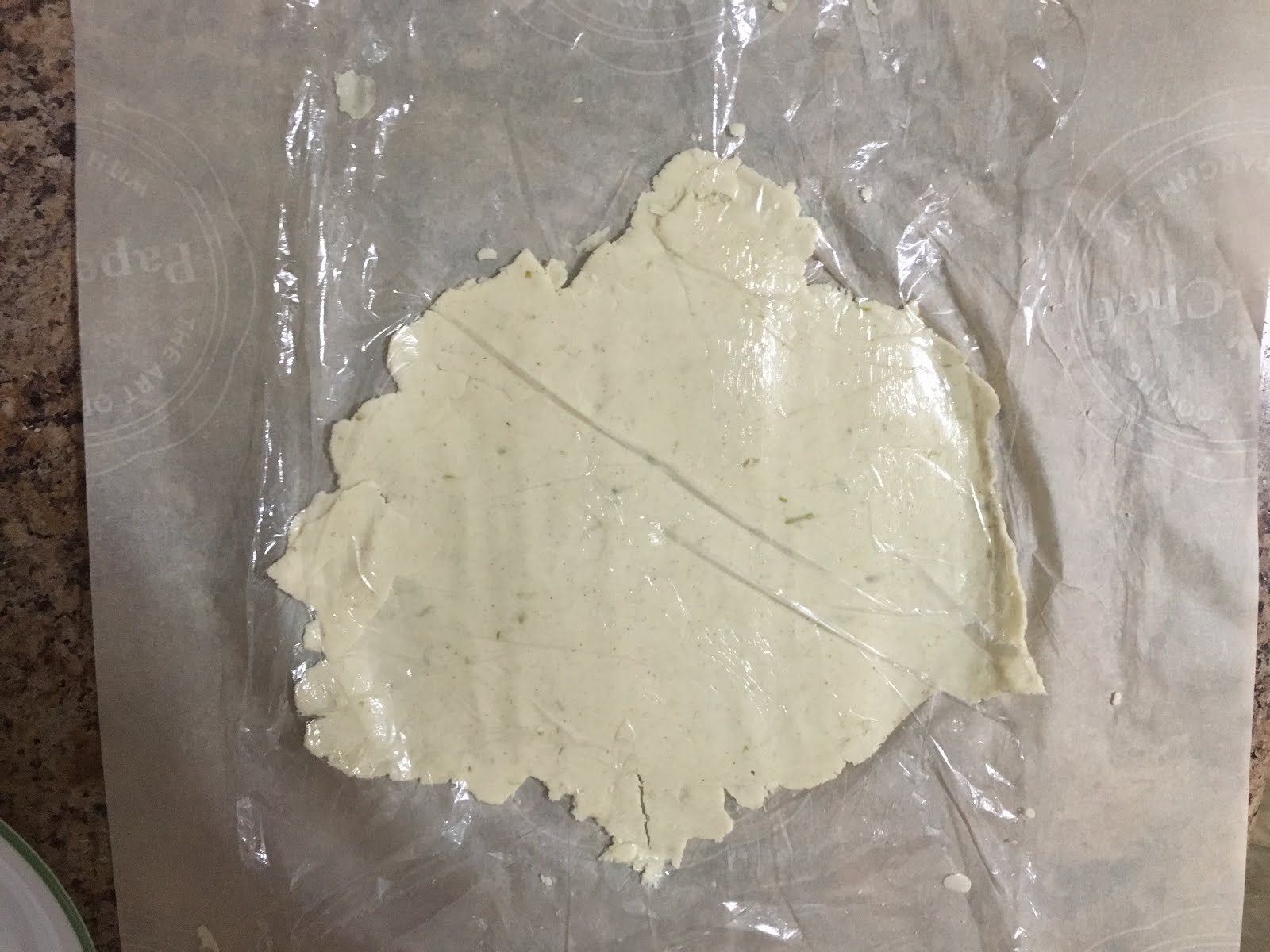 Use a rolling pin to roll the dough ball just until it’s wider than a soup bowl. Make sure to roll back and forth and side to side. FYI: At first your plastic wrap may cling to the dough causing it to curl upward. Simply lift the plastic wrap off the dough, gently place the dough down and put the plastic back. If the parchment becomes wrinkled, simply pull its corners.
Use a rolling pin to roll the dough ball just until it’s wider than a soup bowl. Make sure to roll back and forth and side to side. FYI: At first your plastic wrap may cling to the dough causing it to curl upward. Simply lift the plastic wrap off the dough, gently place the dough down and put the plastic back. If the parchment becomes wrinkled, simply pull its corners.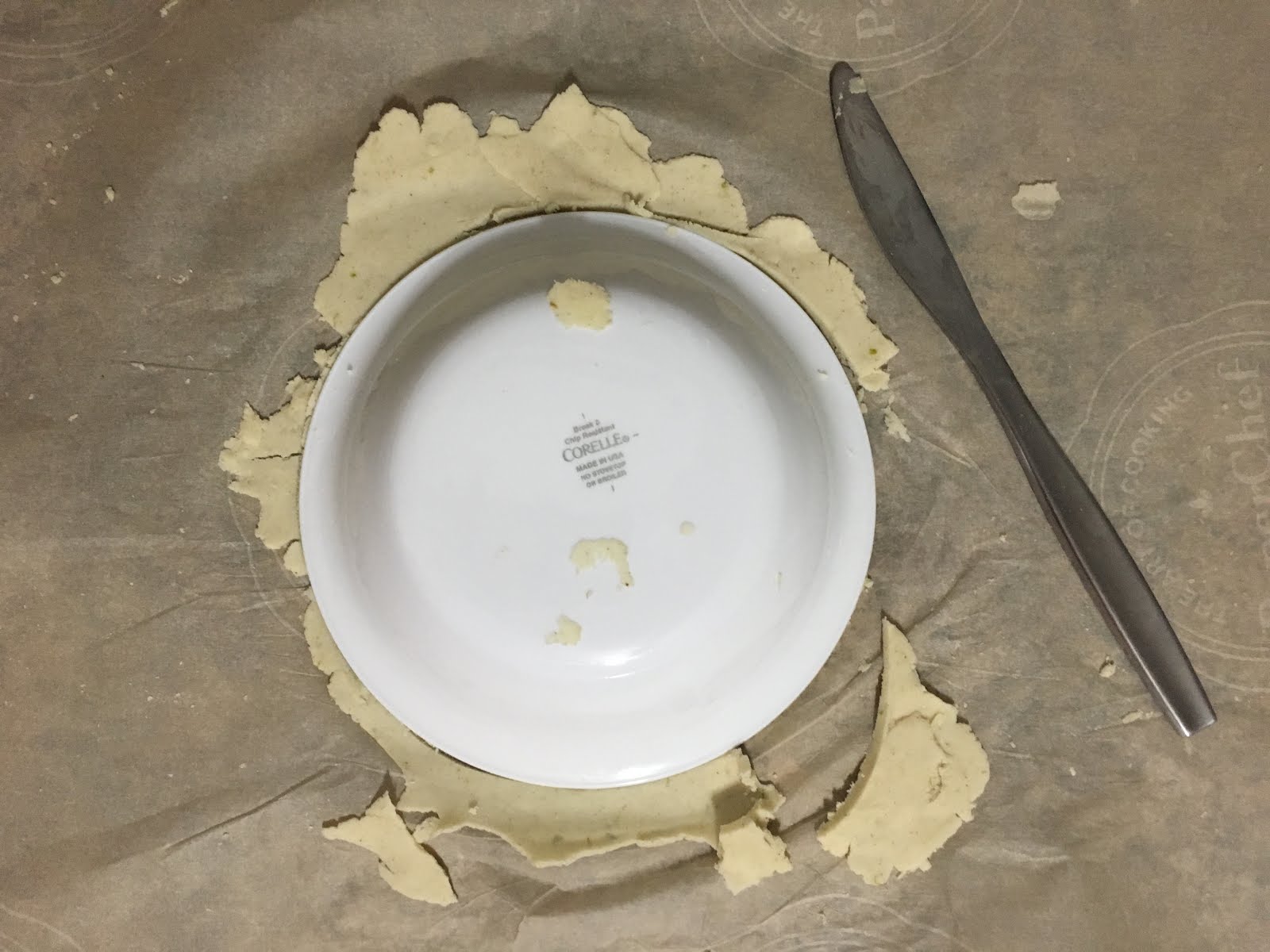 Gently remove your plastic wrap and place a bowl upside down on your dough, using a butter knife cut around the rim of your bowl, this will give you perfectly shaped tortillas. Use the scrap pieces to fill any cuts, are place the rest to the side. There is no gluten in Masa, so you don’t have to worry about over working it.
Gently remove your plastic wrap and place a bowl upside down on your dough, using a butter knife cut around the rim of your bowl, this will give you perfectly shaped tortillas. Use the scrap pieces to fill any cuts, are place the rest to the side. There is no gluten in Masa, so you don’t have to worry about over working it.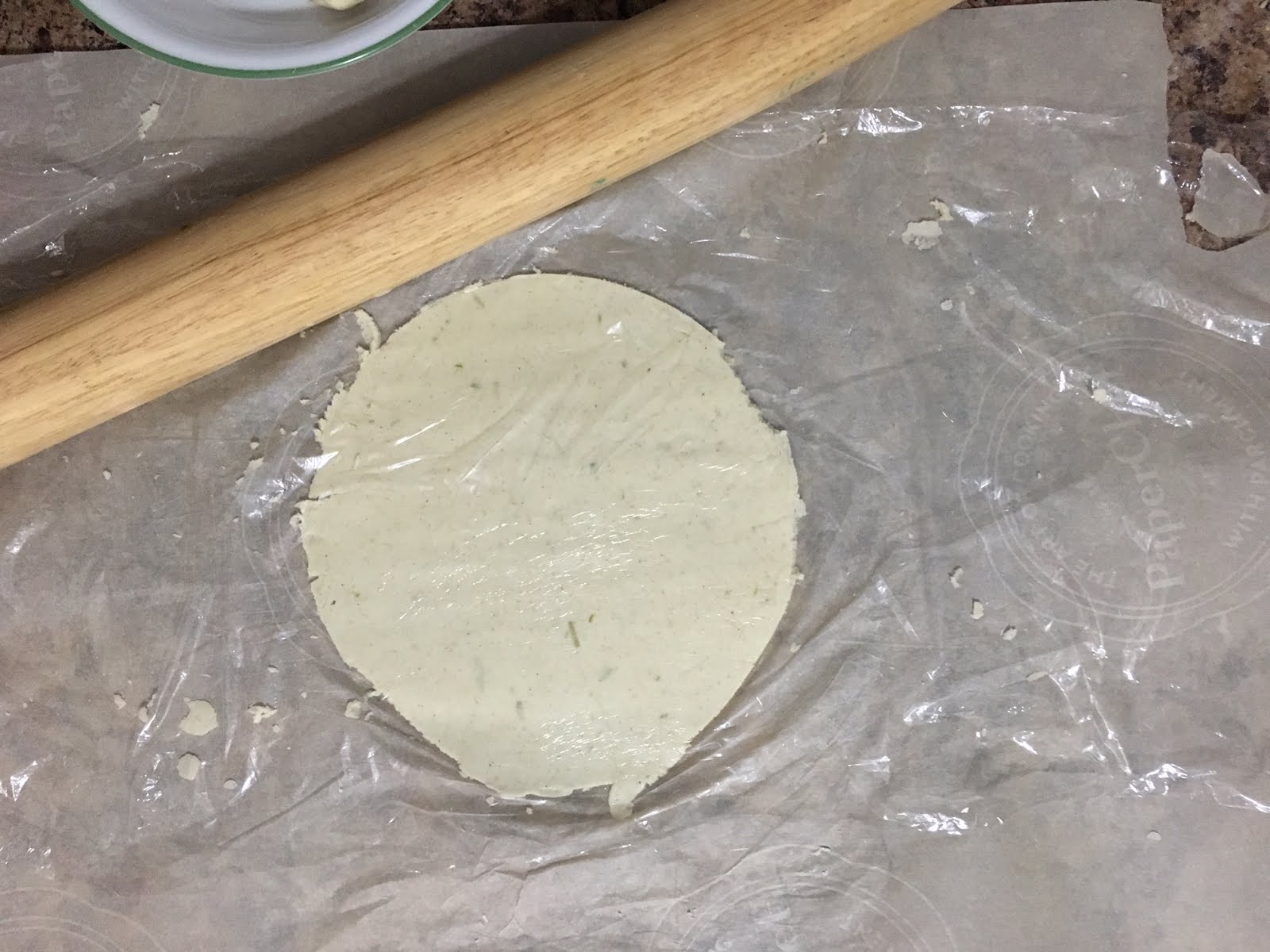 Place the plastic wrap back on top of the dough and use rolling pin thing out the tortilla to about 1/6″
Place the plastic wrap back on top of the dough and use rolling pin thing out the tortilla to about 1/6″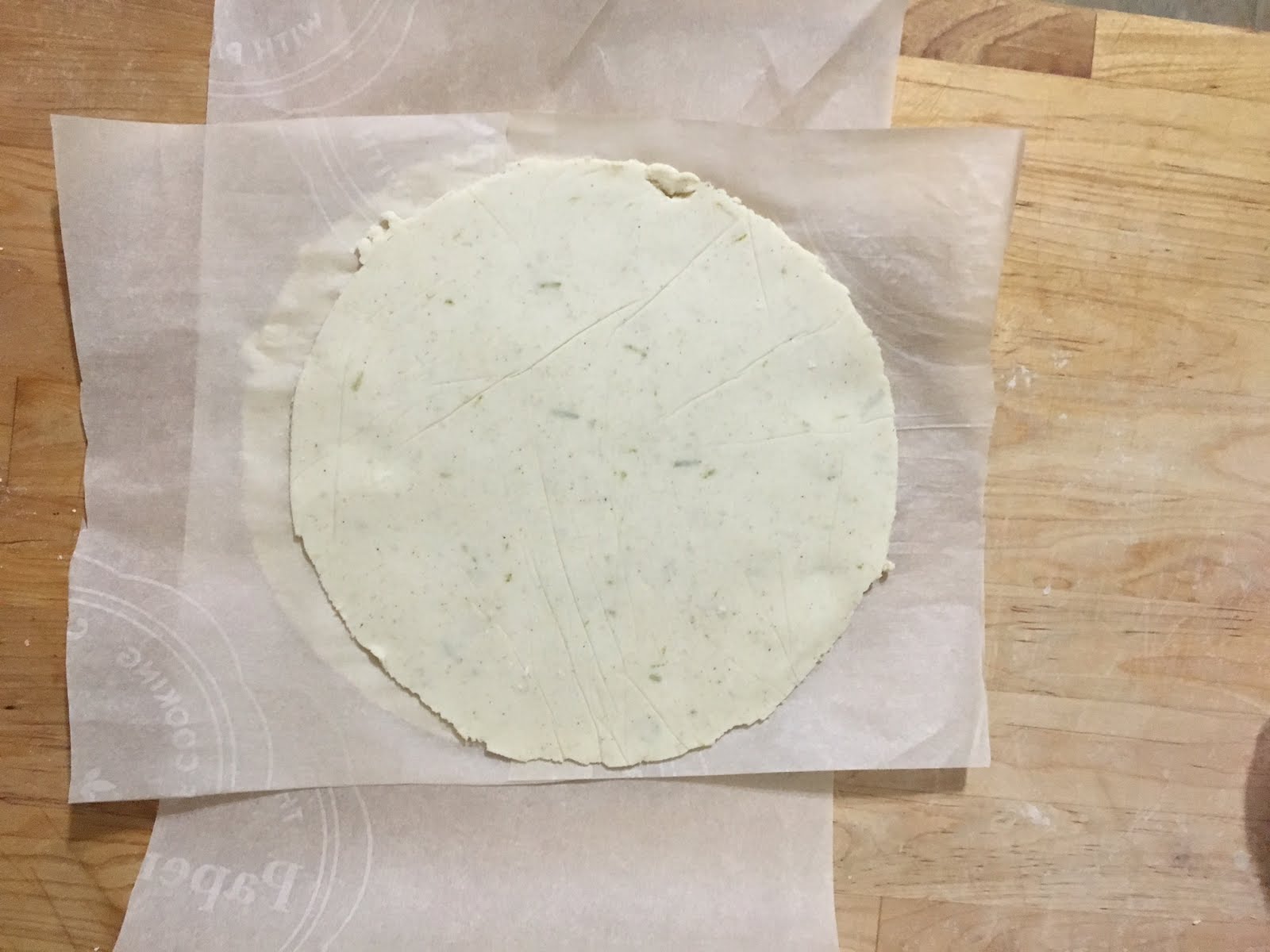 Slowly peel the tortilla off the parchment, and place on the side till you’re ready to cook them. I place all the tortillas on top of each other with a piece of parchment paper to separate them. Cover with plastic wrap, or damp cloth.
Slowly peel the tortilla off the parchment, and place on the side till you’re ready to cook them. I place all the tortillas on top of each other with a piece of parchment paper to separate them. Cover with plastic wrap, or damp cloth.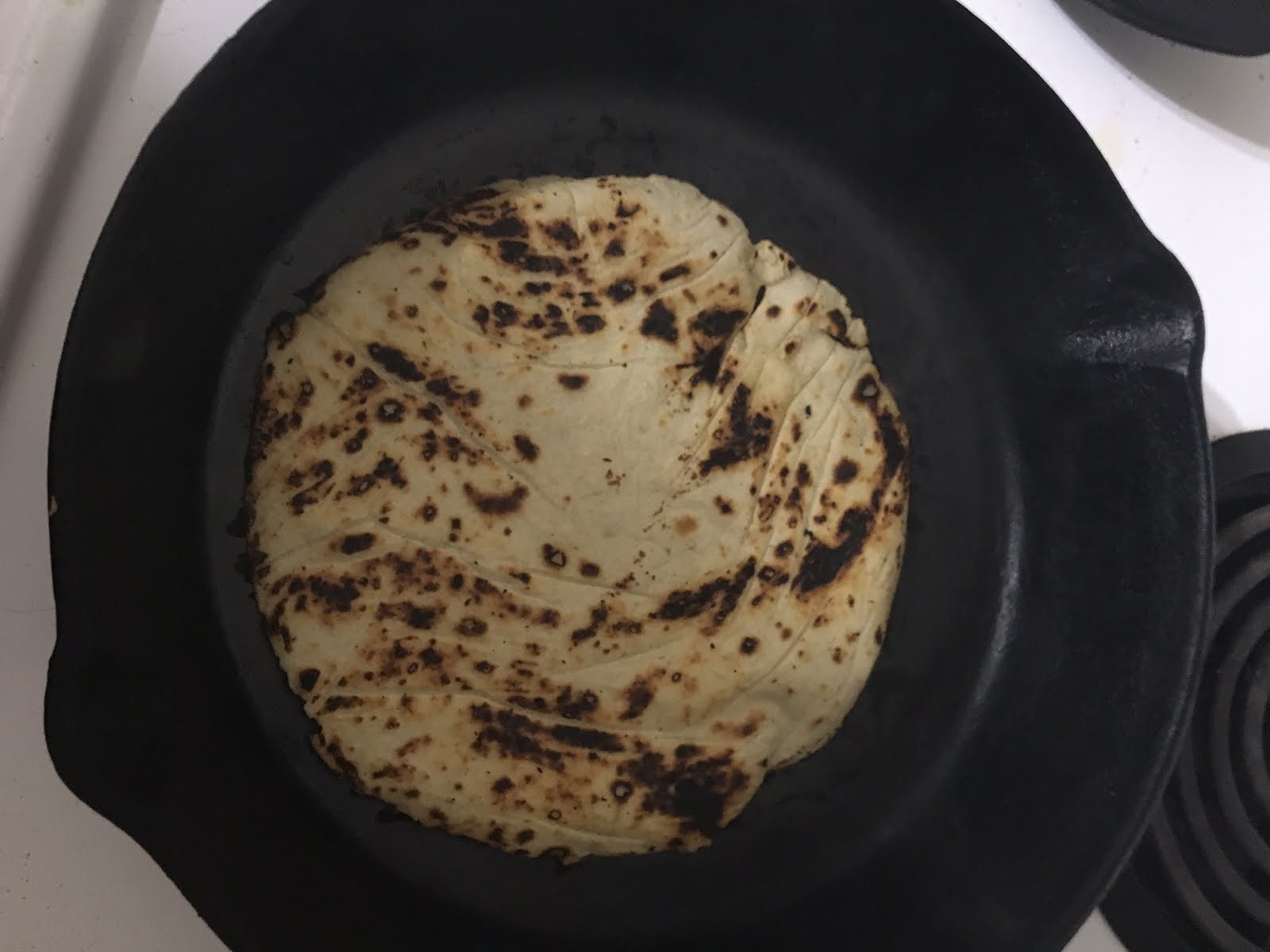 Cook each tortilla one at a time on a non greased cast iron pan set to high heat. If you don’t have cast iron, you can use a stainless steel pan, but you will have to wait longer in between cooking each tortilla for the stainless to regain its heat. It should take about 30-40 seconds on the first side, and about 20 seconds on the other side. They may puff up, thats a good thing, it means they are well rolled.
Cook each tortilla one at a time on a non greased cast iron pan set to high heat. If you don’t have cast iron, you can use a stainless steel pan, but you will have to wait longer in between cooking each tortilla for the stainless to regain its heat. It should take about 30-40 seconds on the first side, and about 20 seconds on the other side. They may puff up, thats a good thing, it means they are well rolled. Using tongs, pick up a cooked tortilla, and lower it into the oil so that only half of it is frying. Using the a wooden spoon push down any big bubbles that form.
Using tongs, pick up a cooked tortilla, and lower it into the oil so that only half of it is frying. Using the a wooden spoon push down any big bubbles that form.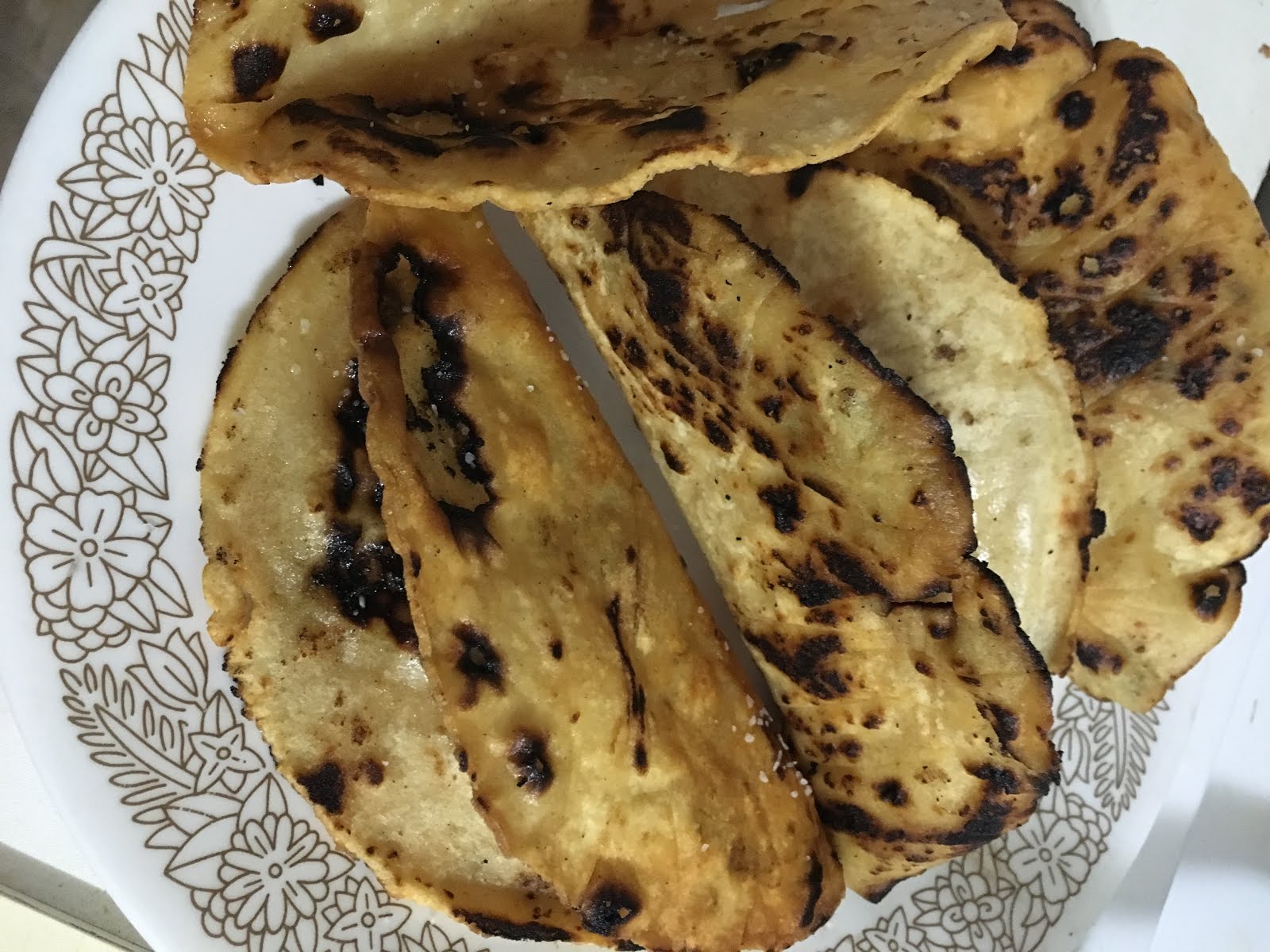 Once the shell holds its shape, move to the side and sprinkle with salt.
Once the shell holds its shape, move to the side and sprinkle with salt.